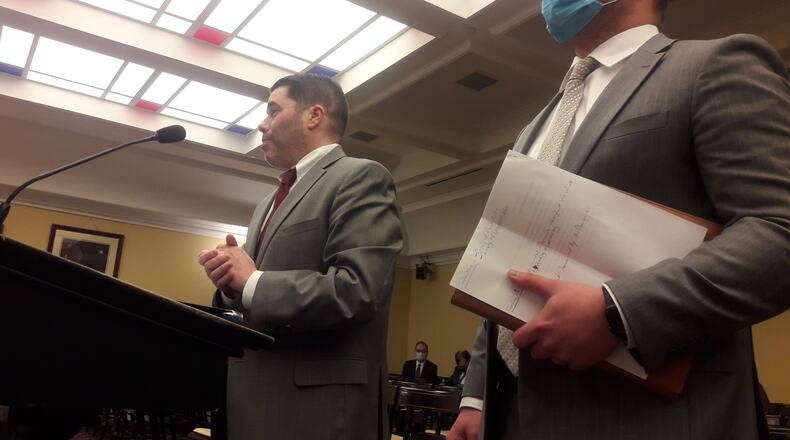The Republican plan shows 42 Democratic-leaning House districts and 57 Republican-leaning districts, 13 Democratic-leaning Senate districts and 20 Republican-leaning districts, according to a summary handout.
Currently Democrats hold 34 of the House’s 99 seats and eight of the 33 Senate seats.
The Democratic counter-proposal would have created three more Democratic-leaning House and two more such Senate seats.
In both plans, some Democratic-leaning seats do so by less than 2%, while no Republican-leaning seats are that closely split. In the Republican plan 12 Democratic-leaning House and four Senate seats are within that margin, according to summary handouts.
Central to the court’s ruling was the need for proportionality: for the likely partisan makeup of the map to resemble the 54% Republican-46% Democratic way Ohioans have voted in recent statewide elections.
In the last few days several commission members – especially co-chairs House Speaker Bob Cupp, R-Lima, and state Sen. Vernon Sykes, D-Akron – said there was greater bipartisan cooperation this time than last summer. But that fell apart leading up to Saturday night’s vote.
The Republican majority’s statement on the new maps asserts that commissioners saw no map that met both proportionality and all constitutional technical requirements.
In response, House Minority Leader Allison Russo, D-Columbus, insisted maps met all those standards could be drawn, but Republicans hindered Democrats from doing so in several ways.
“It is possible to meet the court’s order. It just seems the majority of commissioners do not want to do it,” said Russo, a commission member.
Any objections to the new maps must be filed within the next three days. There were immediate indications that the new maps will be challenged too. Moments after the vote, the Ohio Democratic Party sent out a statement from Party Chair Elizabeth Walters.
“Republicans on the commission are determined to play by their own rules in order to advance their purely partisan interests, ignoring Ohio voters, Supreme Court justices and the Ohio Constitution in the process,” Walter said. “Flouting the rules didn’t work out for these GOP politicians the first time, and we’ll be fighting with everything we’ve got to make sure it doesn’t work now.”
The now-overturned maps would likely have given Republicans 62 of the 99 House seats and 23 of the 33 Senate seats.
The Supreme Court retains jurisdiction over the new maps. Only a week would remain to resolve further objections before the Feb. 2 filing deadline for state legislative seats.
About the Author

